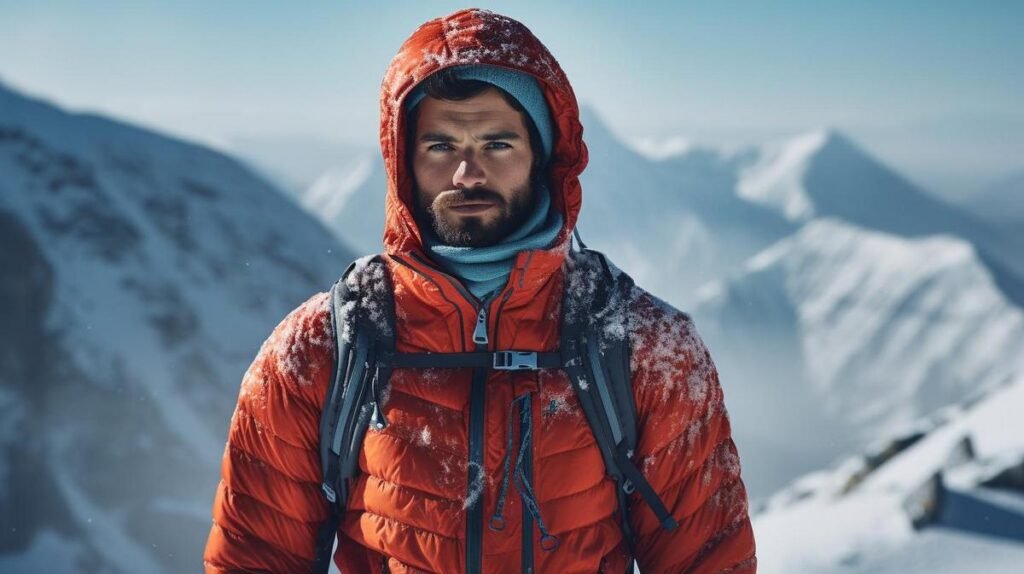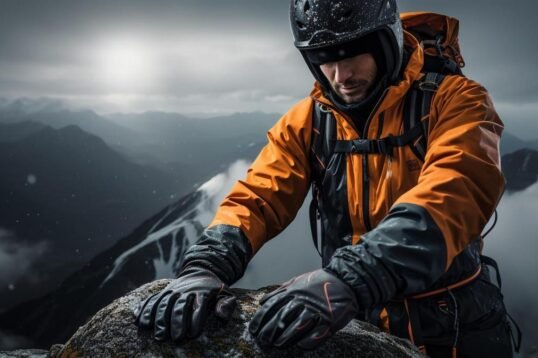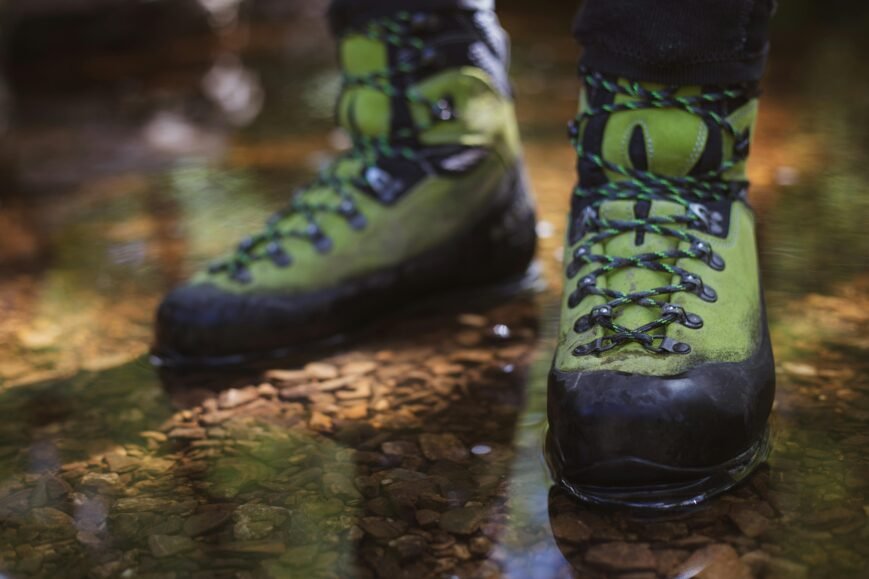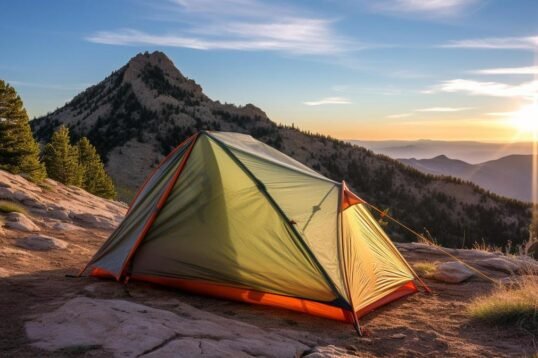- For cold-weather hiking, prioritize clothes that offer warmth, dryness, and suitable fit, whether unisex or gender-specific.
- Layering is essential: use moisture-wicking base layers, add insulating fleece, and top with a windproof, waterproof jacket. Adapt summer gear with thermal liners and heavier coats for freezing temps.
- Protect your skin with strong sunscreen and UV-blocking sunglasses; higher altitudes increase UV risks, so cover up and use sunscreen generously.
- Select hiking pants made for cold weather, prioritizing materials and designs that offer insulation without restricting movement.
- Choose winter-specific hats that cover ears and are wind-resistant, and use waterproof gloves with thermal liners for hand warmth.
- Always hike with an emergency communication device, like a phone or satellite messenger, for safety.
Bracing the chill on a trek doesn’t mean sacrificing comfort. In “How Can You Personalize Your Cold Weather Hiking Outfit for Optimal Comfort?”, we’ll guide you through choosing gear that fits and warms, specifically yours. From must-have boots that keep your toes toasty to pants that let you move freely, we’ve got insights to tackle the cold head-on. Get ready to layer up and step out with confidence, no matter how icy the trail gets!

How Can You Personalize Your Cold Weather Hiking Outfit for Optimal Comfort?
When it’s cold and you plan to hike, your clothes must keep you warm and dry. For women who hike in winter, find the best hiking pants that match your body shape. Pants should let you move and not be too tight. They need to protect you from the cold and wet but also let sweat out so you stay dry.
Next, think about whether you want clothes made for all or clothes made just for women or men. Unisex gear often fits differently but can work well. Yet, some women find that women’s specific winter hiking apparel fits better. They say it helps them move freely and stay warm.
Your head loses a lot of heat, so get good hiking headwear. Look for hats that cover your ears and stay on in the wind. A hat that blocks the wind can make a big difference in how warm you feel.
Your hands need special care too. Try waterproof gloves for trekkers when you hike in snow or rain. Some hikers wear thermal liner gloves under other gloves for extra warmth. This trick lets you take off the top glove if you get too hot.
Remember, your comfort depends on your clothes. Every person feels the cold differently. Test in cold weather to see what works for you. Take care of your clothes, so they keep you warm hike after the hike. Choose what fits, whether it’s unisex or gender-specific, to enjoy your winter adventures.
How to Equip Yourself for Changing Winter Hiking Environments?
Hiking in the cold needs smart gear choices. Picking gear for different winter temps is key. You need layers that you can add or take off. Start with your summer gear. Then add things for more warmth. Avoid the sun’s harsh rays. Even when it’s cold, they can harm your skin. Be safe at high spots with strong UV rays. Bring a device to call for help if you need it.
Adjusting your gear for hikes in moderately cold (40-50 degrees) vs. freezing temperatures
For a cold hike, dress in layers. This is the best plan. Always bring more warmth than you think you’ll need. It’s okay to layer summer clothes. Just add a warm hat, gloves, and a jacket. When it’s super cold, pick heavier coats. And don’t forget insulated pants. These keep legs warm.
Tips for converting existing hiking gear for winter use
You can use your summer gear in the cold. Just be wise about it. Put a warm fleece under your lighter jacket. Add thermal leggings under pants. Bring gear to protect your face and ears too.
The importance of sun protection even during winter hikes
The winter sun can still burn your skin. Always use a strong sunscreen. Wear sunglasses to guard your eyes. Keep your skin safe.
Assessing and mitigating UV exposure risks at higher altitudes
The higher you climb, the stronger the sun hits. Even in the cold. Pack gear that covers the skin and use sunscreen. Keep your eyes safe behind UV-blocking glasses. Stay safe from the sun as you climb higher.
Essential emergency communication devices to carry on winter hikes
Always hike with a way to call for help. Bring a phone or a radio. Make sure batteries can handle the cold. A device that sends your spot to rescue teams can be a lifesaver. Carry it for that ‘just in case’ moment.

How Do You Select the Best Hiking Pants for Cold Weather?
When hiking in cold weather, pants are key. You need to choose them well. For insulation and comfort, check the material and design of winter hiking pants. Softshell pants offer flexibility and breathability. They are a solid choice for active hikes in cold, but not too wet climates.
Hardshell pants are your pick for harsh weather. They provide top protection from wind and water. Insulated trekking pants keep your legs toasty when the mercury drops. In chilly weather, fleece-lined trousers are a sure win. They trap heat close to your body. If the forecast says wet, add waterproof overpants to stay dry. Always tweak your choice based on weather and trail needs. Remember, the right pants can make your hike comfy and fun.
How Can You Personalize Your Cold Weather Hiking Outfit for Optimal Comfort?
When hiking in the cold, each piece of gear matters. For women, getting the best hiking pants for cold weather women’s style can mean a world of difference in comfort and mobility. These pants should fit well and allow you to move without feeling held back.
Women’s specific winter hiking apparel often includes design touches that suit their body shapes better. This can be in the pants’ hip and waist areas or jackets tailored at the waist. The fit is not just about comfort but also about keeping warm air close to your body.
Now, is unisex gear good enough? Sometimes, yes. If the fit is right and the gear keeps you warm, it might work perfectly. But women’s gear is made for women’s bodies. That can mean a better fit, more warmth, and more comfort on the trail.
Let’s talk about your head. When it’s cold, you lose a lot of heat from your head. So, you need great hiking headwear for cold climates. Hats should cover your ears and stay snug on windy trails. They can also be a fun way to show your style!
Your hands need attention too. Choose waterproof gloves for trekkers to keep your hands dry. Adding thermal liner gloves underneath gives more warmth. The liners can also work alone when you need to do tasks that require more finger flexibility.
Remember, personalizing your outfit is about what works best for you. Mix and match until you feel ready for any chill the trail might throw your way.

How Can You Personalize Your Cold Weather Hiking Outfit for Optimal Comfort?
You want your outfit to work for you when hiking in the cold. Start with pants that let you move and keep you warm. The best women’s hiking pants for cold weather are the ones that fit well and shield you from the chill.
Girls, look for clothes made just for you. They will fit better and keep you comfy. Take time to pick your pants. They are key for both warmth and easy hiking.
Not all gear fits every person the same. You might like gear made for all, or gear made just for men or women. See what feels right for you.
Your head and ears can get very cold fast. Choose a hat or beanie that covers well and keeps the heat in. Pair it with waterproof gloves for trekkers and you’ll be ready.
Cold can sneak in fast. Keep it out with gloves that stay dry and have a warm layer inside. This way, you can wave goodbye to numb fingers on your hike.
By using the right clothes, you make sure each hike is fun, not a freeze-fest.
Choosing women’s specific apparel for cold weather hiking
Women’s bodies are different from men’s, so it’s smart to pick clothes made just for ladies. This means jackets, pants, and base layers shaped to fit a woman’s curves. Better fit leads to better warmth and movement.
The importance of selecting the right hiking pants for comfort and mobility
The best hiking pants for cold weather women’s needs are both warm and allow you to move freely. They should have insulation but also stretch so you can climb and walk without feeling held back.
Deciding between unisex and gender-specific outdoor clothing
Unisex gear is okay, but it may not be as comfy. Gender-specific gear is tailored, fits better, and keeps you warmer. So, go for women’s specific winter hiking apparel when you can.
Selecting headwear for adequate protection against cold climates
Keep your head warm with hats made for cold hikes. Look for ones that cover your ears and block wind. Hiking headwear for cold climates is key to your overall comfort.
Waterproof and thermal glove options for maintaining hand warmth
Hands get cold fast, so choose the right gloves. Waterproof gloves for trekkers keep snow and rain out. Add thermal liner gloves beneath for extra warmth. This duo will keep your fingers toasty.
Remember, comfort starts with the perfect fit and layers you can adjust. With these tips, your cold-weather hike will feel just right.

How to Equip Yourself for Various Winter Hiking Scenarios?
How do you hike in 30-degree weather? Dress in warm layers and keep dry. In moderately cold weather, like 40 to 50 degrees, you may want less insulation than you would for hiking in freezing temperatures. Start with a moisture-wicking base layer that pulls sweat away. Then, add an insulating layer like fleece for warmth. Top it off with a windproof and waterproof jacket. For colder, freezing hikes, consider thermal underwear and heavier insulation.
You can use gear from summer hikes in winter. Add warm liners to gloves and socks for extra warmth. Turn a rain jacket into a wind barrier over a thick sweater. Zip in a fleece lining to a summer sleeping bag for winter camping.
Even in winter, the sun can harm you. Wear sunglasses that block UV rays and apply sunscreen to exposed skin. Remember, snow can reflect sun rays and increase UV exposure, especially at high altitudes.
At high places in the cold, UV risks grow. UV rays are stronger up high, and snow reflects them onto your skin. So, it’s key to protect every bit of skin with clothing and sunscreen. This even means getting a face mask or buff when the sun’s rays shine bright.
Never skip on emergency devices while out in the winter wilds. Carry a whistle, a waterproof mobile phone, or even a satellite messenger. These can help a lot if you ever need to call for help.
Remember, adjusting for various winter temps keeps you safe and comfy. Dress smart, protect your skin, and carry safety gear – enjoy your winter hike without worry!

Conclusion
In these posts, we learned key tips for staying warm and safe while hiking in cold weather. We looked at choosing the right boots, layering clothes, and picking the best pants. We covered winter hiking for beginners and safety practices. Always think about your health when hiking in the cold. Be ready for different winter hikes by picking the right gear. Remember, prepare well, and enjoy your adventure safely.
![]()







